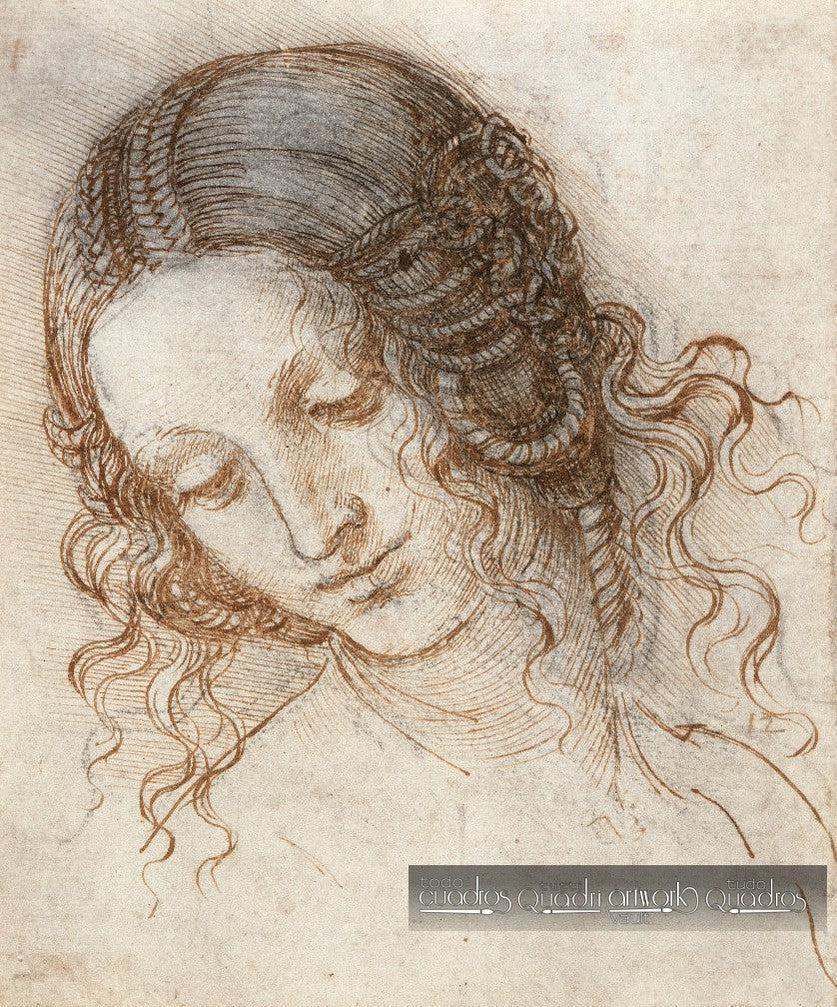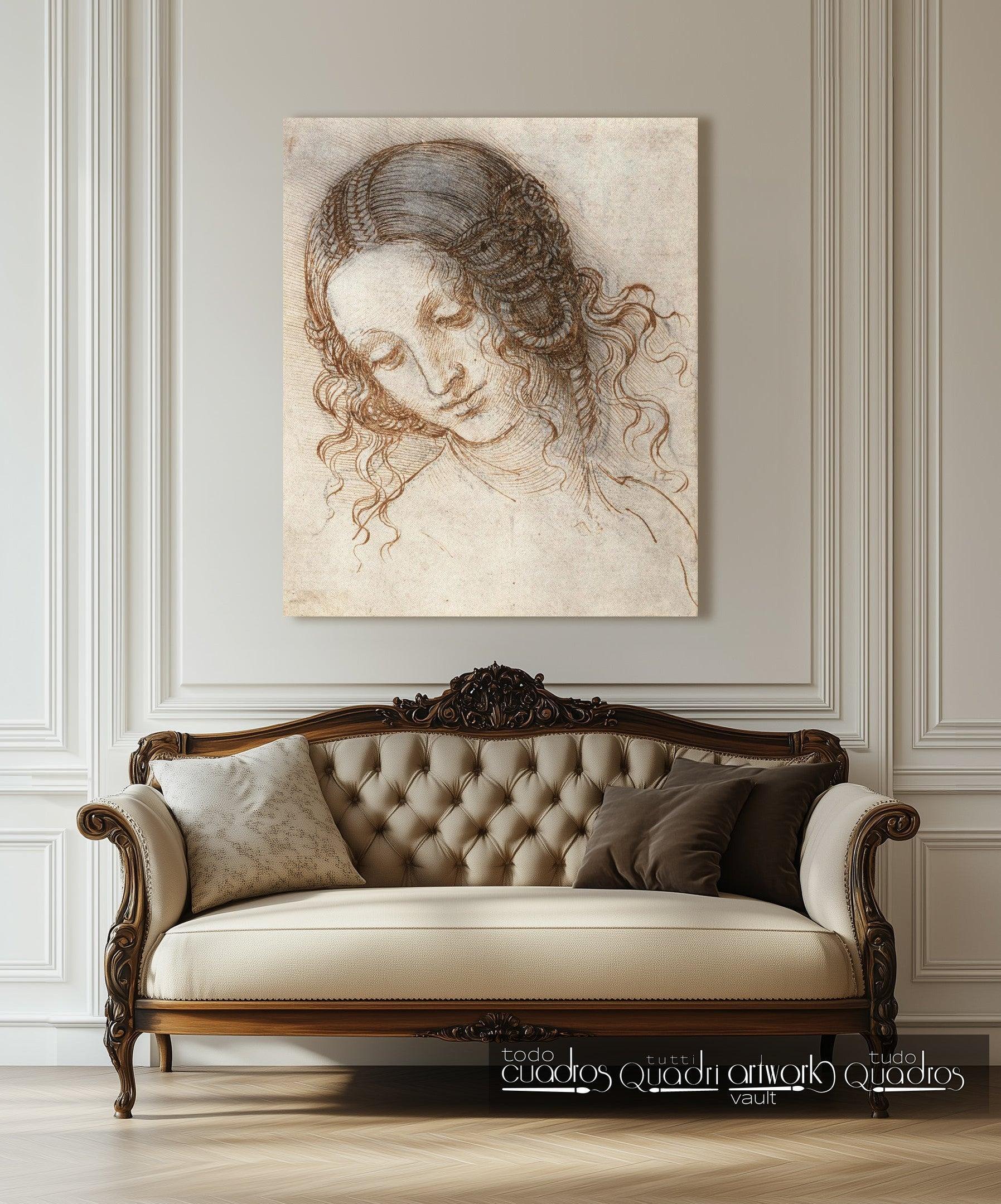

Head of Leda, Leonardo da Vinci
- Oil on linen canvas
- 100% hand-painted
- Painting reproduction
- Available for online purchase
- See quality
- Shipping
- Money-Back Guarantee
- Reviews
| Author: | Leonardo da Vinci |
|---|---|
| Original Title: | Testa di Leda |
| Type: | Pen and Ink |
| Style: | Renaissance |
| Medium | Drawing |
| Support: | Paper |
| Year: | 1504-06 |
| Subject: | Classical Mythology |
| Located: | Royal Collection Trust, Londres |
An intimate study of the female face
The “Head of Leda” is one of those studies that reveal Leonardo da Vinci’s creative process, where his fascination with anatomy, light, and the psychology of the human face becomes evident. The delicate yet confident line shows how the master explored female expressiveness beyond the purely aesthetic, seeking to convey an aura of melancholy and mystery. The meticulous hairstyle, adorned with subtle details, also reflects Leonardo’s interest in the balance between naturalism and artifice—a distinctive trait of his graphic work.
The classical myth reinterpreted
It is especially significant that, although the final work of Leda and the Swan has been lost, these studies allow us to reconstruct the way in which Leonardo conceived the idealization of the classical myth. The serenity of the gesture, combined with the diagonal tilt of the head, connects with his constant search for the “moto dell’anima,” that is, the representation of the inner movement of the soul. Thus, the Head of Leda is not simply a preparatory study, but a fragment that condenses the full complexity of his artistic and philosophical thought.
Leda in the context of the Renaissance
In the context of the Italian Renaissance, the choice of Leda as a subject is revealing: it was a time when Greco-Roman myths were reinterpreted under a new humanist light. The female face conceived by Leonardo responds to this synthesis between classical heritage and Christian sensitivity, where beauty is not just appearance, but a manifestation of order and divinity. The softness of the features and the harmony of the composition engage in dialogue with other ideal portraits circulating in the intellectual circles of Florence and Milan.
Parallels with other masters
When compared with contemporary works such as the studies of Sandro Botticelli or the female figures of Perugino, the Head of Leda shows a technical refinement ahead of its time. While other artists explored the myth from a more narrative or decorative perspective, Leonardo focused on gesture and gaze, on that inclination of the head suggesting introspection and desire. This approach links him to the essence of the High Renaissance, where art became a vehicle of thought and not just visual representation.
This work is an initial study of the young woman’s head from the painting Leda and the Swan. It is a drawing of a female head looking diagonally downward. The hair is neatly arranged and adorned around the ears.
The mythological figure Leda was seduced by the god Jupiter, who had taken the form of a swan. Leonardo worked on two compositions on this subject. The final work was destroyed in the 18th century. In the four surviving studies, Leonardo placed special emphasis on the expression of the faces and the details of the hair; in all of them the same inclination of the head can be seen. Today, The Head of Leda is part of the Royal Collection of the British royal family.
Choose options




